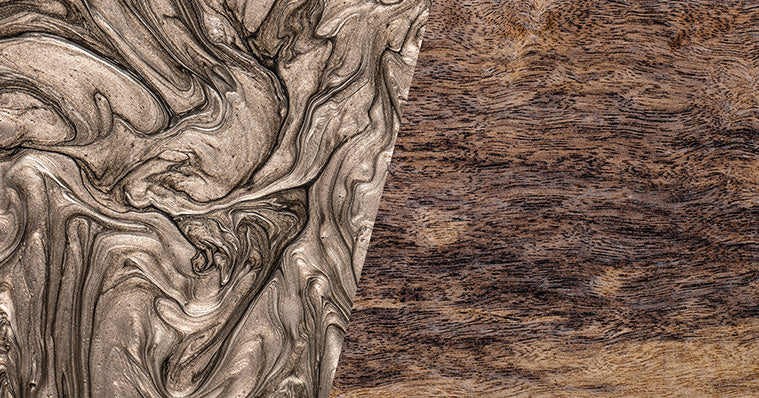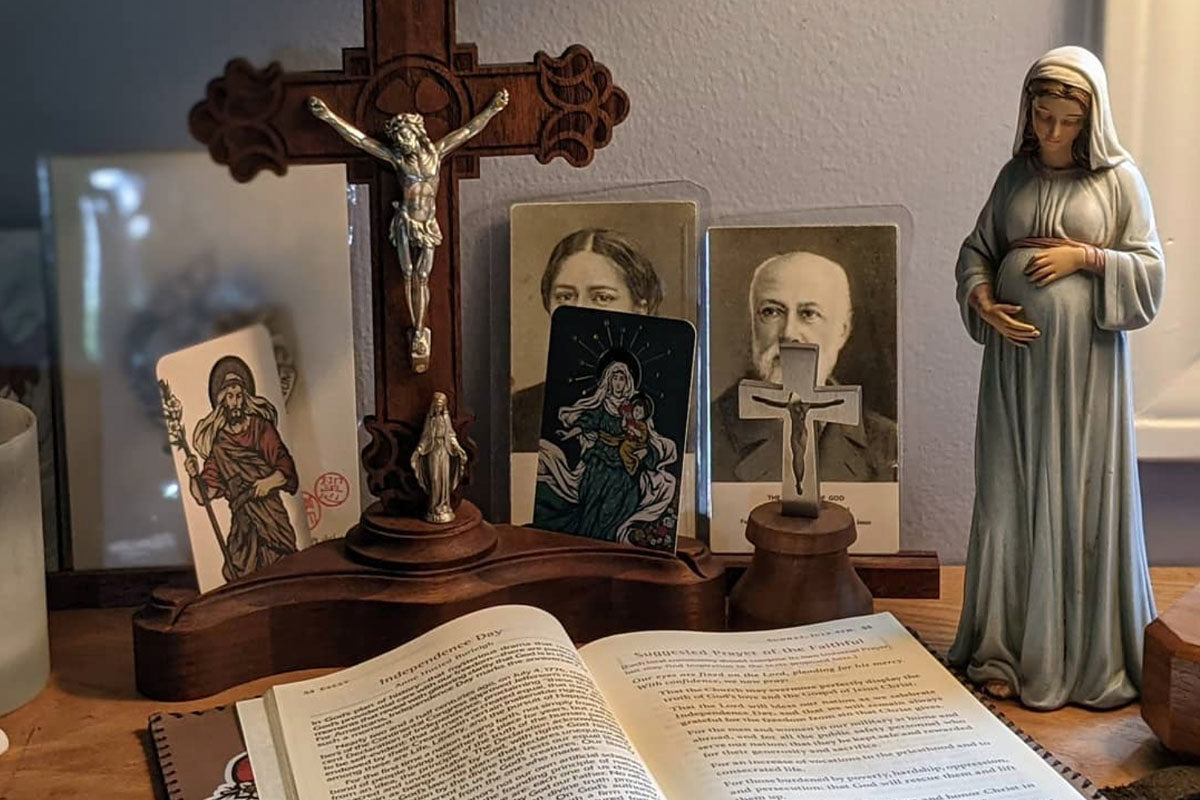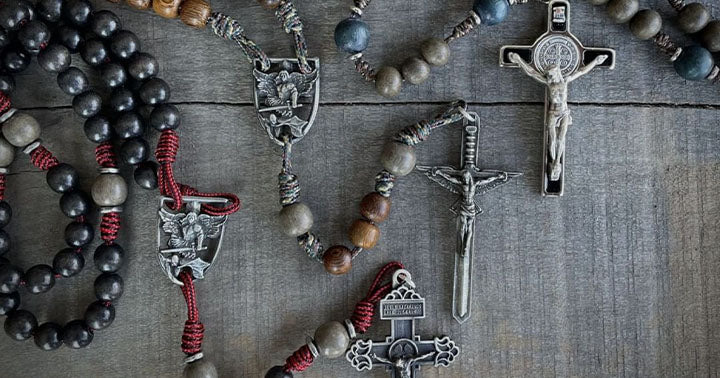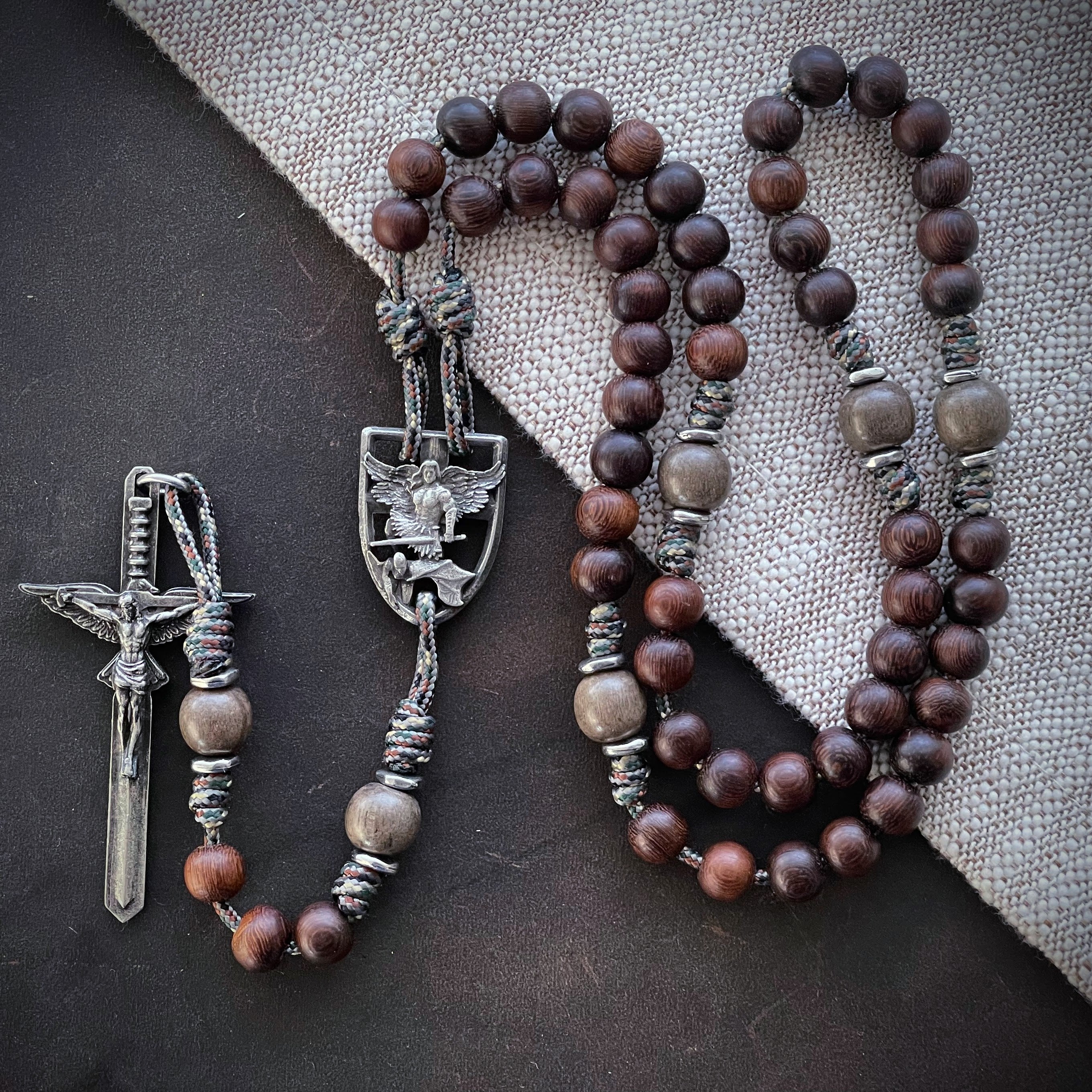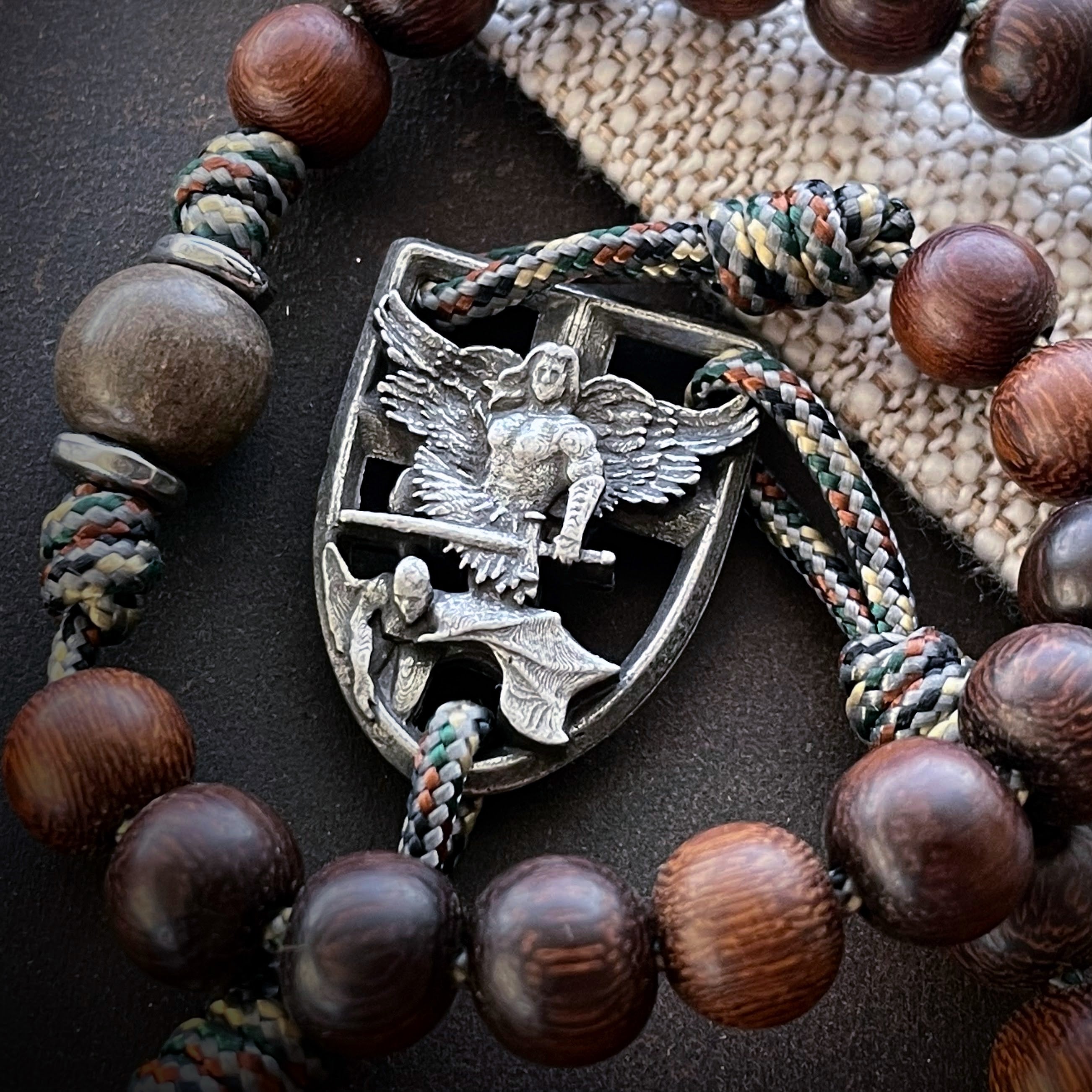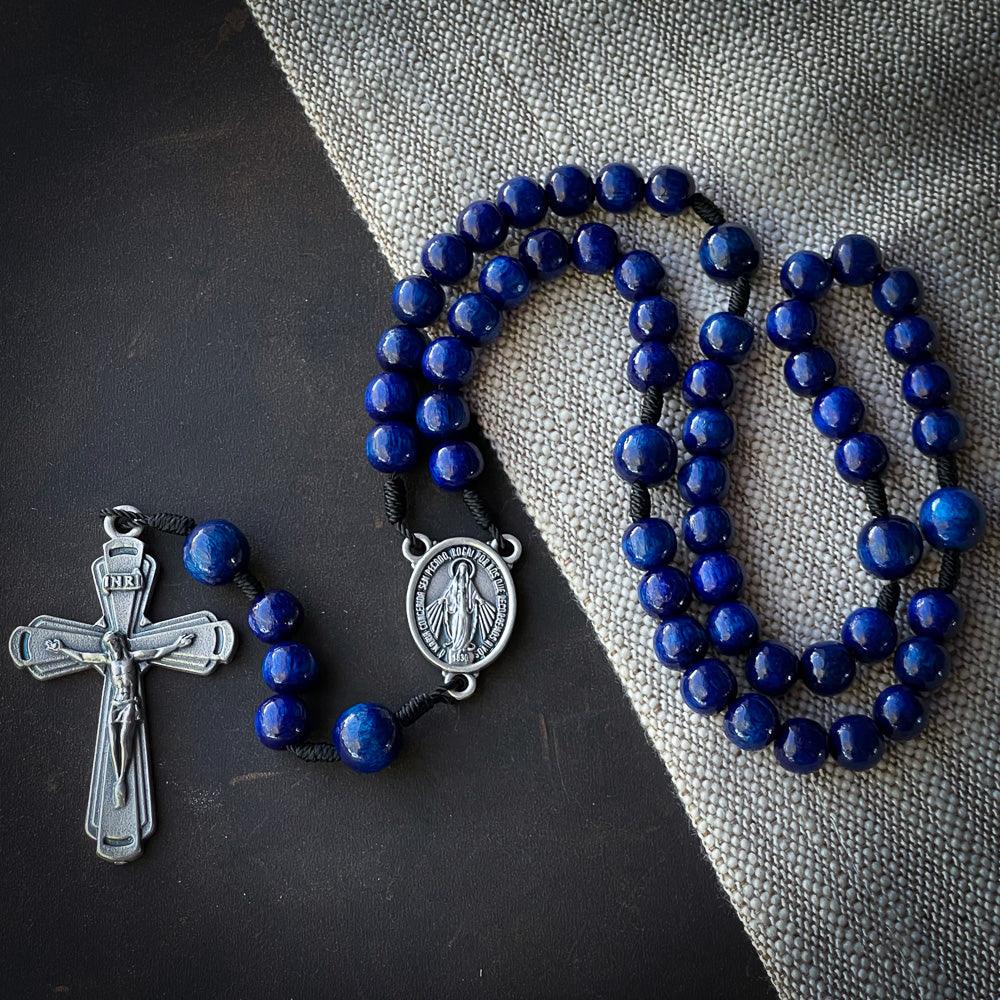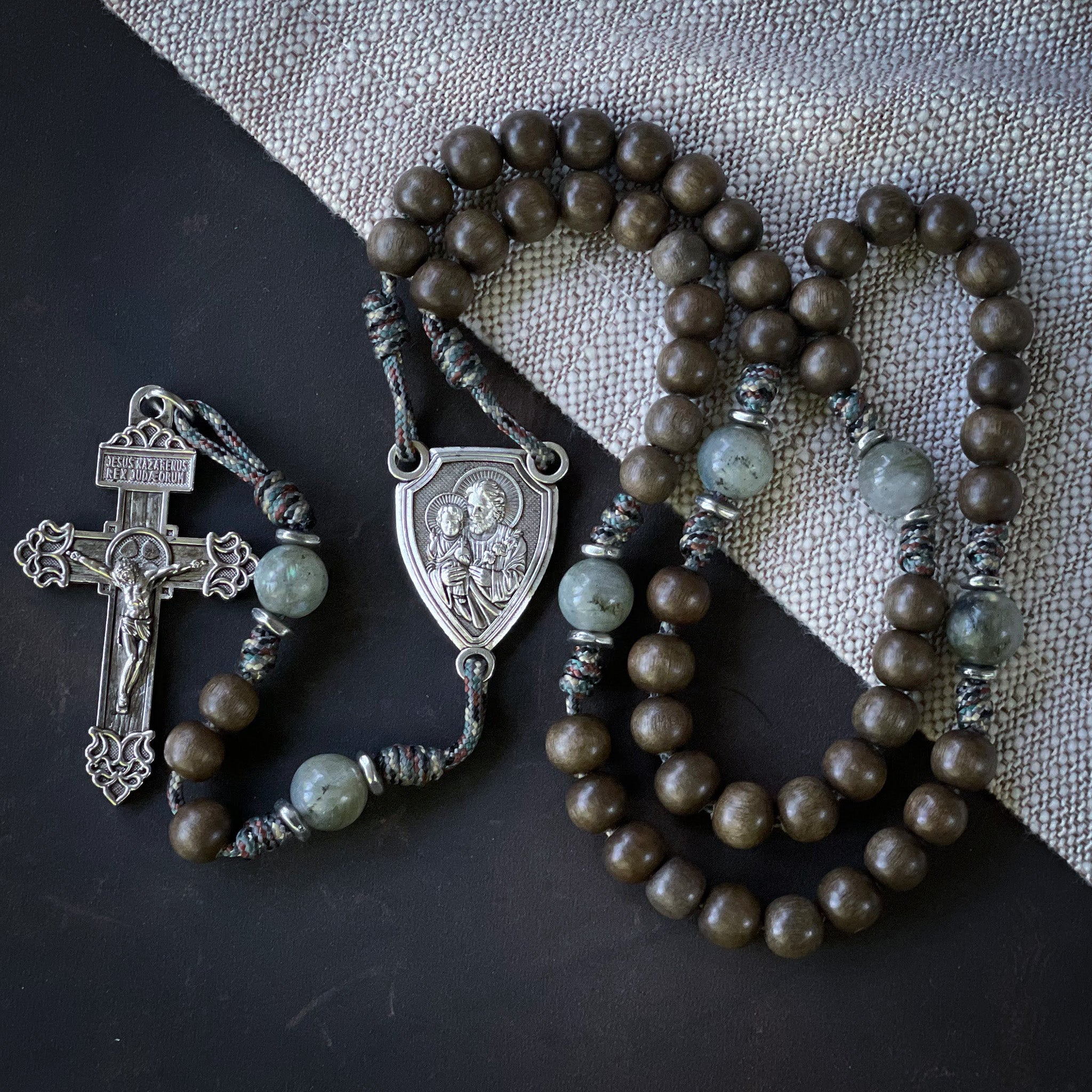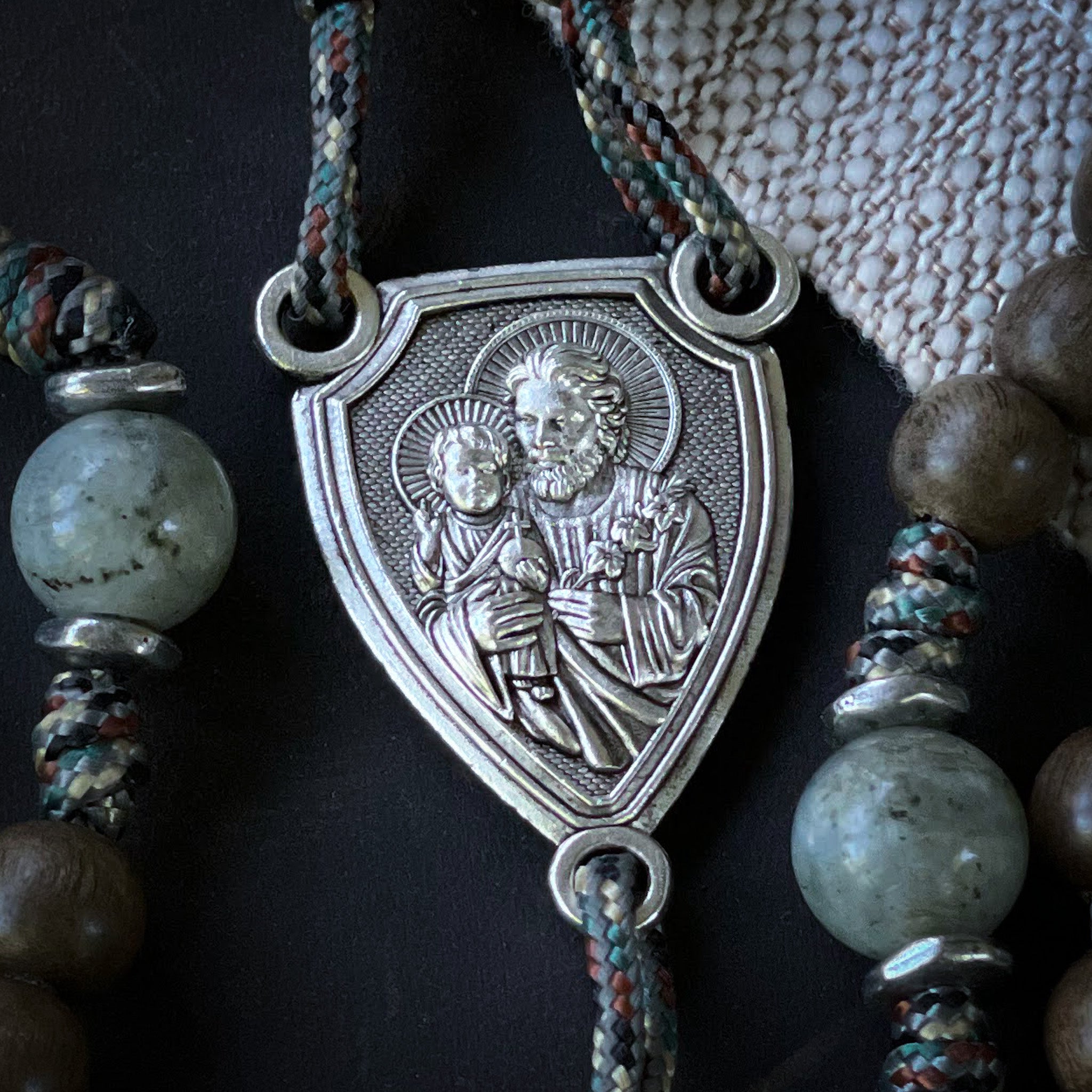
Here they are. Our deepest trade secrets—revealed! What makes a premium, handmade item from the Catholic Woodworker tick? What’s it made from? How do we make that choice? Who helps us do it? And what does it all mean to you?
Read on to learn more—because the rosary in your hand isn’t just a product, or even a great product. It’s a vision and a journey, and every part of it is chosen for you with loving care.
First things first
Materials flow from the mission. The Catholic Woodworker’s mission is to help you ground your prayer life. We do that by making beautiful spiritual implements that are built by hand, built for a purpose, and built to last. Everything else proceeds from that philosophy, beginning with who our suppliers are.
We work with people who provide the quality that we demand and you deserve—full stop. When the Catholic Woodworker started, we had about fifteen vendors. But since then, we’ve kept narrowing it down to only those who are truly the best at what they do.
For example, if you’re a frequent visitor, you’ve likely noticed that we use St. Benedict crucifixes from Italy in many of our products. There’s a reason for that—our Italian partners have made St. Benedict crucifixes longer than anybody else, and they assemble them piece by piece with high attention to detail. They’re not the only people in the world who make them. But they’re the only ones we trust.
People we can relate to
We also choose suppliers who share our commitment to an ethical Catholic workplace. Consider our partners in Brazil who make many of our rosary beads and centerpieces. They’re topflight craftsmen, but they also go the extra mile to create fair working conditions for their employees and they share breakfast and prayer every morning. We think of them as a Brazilian version of the Catholic Woodworker! We also have a similar relationship with Catholic bead makers in the Philippines.
Overall, we’re looking for suppliers with whom we can personally connect so that we have a deep knowledge of the product they’re making, the quality standards that govern their process, and how their workers are being compensated. We encourage you to do that, too—and not just with us. Look at labels. Where do the things you’re buying come from? What are they made out of?
And when there’s an instance—and there are a few—where nobody makes the parts we want the way we want them made, we roll up our sleeves and see to it ourselves. It’s worth it, for God and for you.

Nuts and bolts
Once we find the best people, we source the best materials from them. We like bronze for rosary centerpieces and crucifixes—it holds more detail compared to other, cheaper metals. Imbuia is one wood we favor for our rosary beads—it’s hard, fragrant, and resilient. Walnut is ideal for home altars and wall crucifixes—it’s beautiful and readily available in the United States, which is important because we do all the woodwork for those items onsite in Indiana.
Then we pay attention to little details. We select wood for natural colors that will evolve and age like fine wine, bringing out the natural beauty that God has already made. We make sure metal rosary parts are smooth and non-abrasive, because connecting points with sharp or rough edges are where your rosary will break.

“For you and for many”
We keep a sharp eye for balancing quality with accessibility. If we only sold hundred-dollar rosaries, nobody would buy them—and we very much want our products to be a realistic choice for a wide audience. The Catholic Woodworker is, at bottom, a ministry—and if only a few people can afford what we make, then it just isn’t a ministry!
That’s why some of our newest rosaries are completely built in Brazil. We can reduce costs while still paying a just wage, and then pass those savings to you. It’s also why we have different types of home altars. We don’t do it for the aesthetic variety alone! Take two of them in particular—the St. Joseph and the St. Francis.
The St. Joseph Home Altar is gorgeously intricate. It’s also very time-consuming to cut, and if you purchase it, you’ll be paying the craftsman a just wage for the time he clocked. On the other hand, we offer the St. Francis Home Altar. It’s still beautiful and expertly made from top-quality walnut wood. But it’s also smaller and humbler, so it takes less time to build, and is more affordable for more customers. And more affordable means more people coming to God in prayer.
At the end of the day
Honestly, it’s simple—not always easy, but simple. We look for the best materials. We get them from the best people. Then we put it all together in such a way that as many of you as possible can pray as best as you can.
And finally there’s that moment at home where it’s just you and God, and—we humbly hope—you can reach out and touch His footstool, whether through the altar on your desk, the crucifix on your bedroom wall, or the rosary in your own hands. “Bless the Lord, all you works of the Lord, praise and exalt Him above all forever” (Daniel 3:57).


